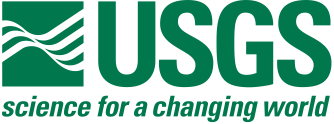News
USGS 3DEP Standard DEMs now available via OpenTopography
 OpenTopography is pleased to announce that we're now offering access to USGS 3D Elevation Program (3DEP) Standard Digital Elevation Models (DEMs) through our easy to use web-based interface with associated processing and visualization tools.
OpenTopography is pleased to announce that we're now offering access to USGS 3D Elevation Program (3DEP) Standard Digital Elevation Models (DEMs) through our easy to use web-based interface with associated processing and visualization tools.
LINZ dataset covering Queenstown, NZ now available
OpenTopography is pleased to announce the release of a new lidar dataset covering 166 square kilometers of Queenstown and Arrowtown on the South Island of New Zealand. The dataset, "Queenstown, Otago, New Zealand 2021" has an average point spacing of 7.8 pts/m2, and was funded by the Queenstown Lakes District Council , with data management by Toitū Te Whenua Land Information New Zealand (LINZ).
New NCALM dataset in North Carolina
OpenTopography is pleased to announce the release of a new lidar dataset covering approximately 78 km2 near Hendersonville, North Carolina. This dataset was collected as part of an NCALM Seed grant for Dr. Corey Scheip at North Carolina State University to evaluate regional landslide area-volume scaling relationships after a large rainfall-triggered mass wasting event in western North Carolina. This project focused on how debris flows initiate, bulk, and deposit as a function of topographic variables.
Land Information New Zealand (LINZ) dataset covering Whanganui, NZ released
OpenTopography is pleased to announce the release of a new lidar dataset covering 444 square kilometers of Whanganui and the surrounding area on the North Island of New Zealand.
Land Information New Zealand (LINZ) dataset covering Bay of Plenty, NZ released
OpenTopography is pleased to announce the release of a new lidar dataset covering 1989 square kilometers of Northwest region of the Bay of Plenty on the North Island of New Zealand. The dataset, "Bay of Plenty Northwest, New Zealand 2020-2021" has an average point spacing of 7.6 pts/m2, and was funded by BOPLASS Limited, with data management by Toitu Te Whenua Land Information New Zealand.
Land Information New Zealand (LINZ) dataset covering the Gisborne District, NZ released
OpenTopography is pleased to announce the release of a new lidar dataset covering all 8,756 square kilometers of the Gisborne District on the North Island of New Zealand. The dataset, "Gisborne, New Zealand 2018-2020" has an average point spacing of over 10 pts/m2, and was funded by Gisborne District Council, with data management by Toitu Te Whenua Land Information New Zealand.
Updated ALOS World 3D DEM Now Available Through OpenTopography
ALOS World 3D - 30m (AW3D30) is a freely available, downsampled version of a high-resolution (5m) dataset collected by The Japan Aerospace Exploration Agency (JAXA). The ALOS World 3D - 30m dataset is a digital surface model derived from satellite-based stereo-photogrammetry. OpenTopography has updated its version of AW3D30 from version 1 (May 2015) to version 3.2 (January 2021).
New global data available: NASADEM and Copernicus DEM
OpenTopography has expanded our collection of global datasets to include the NASADEM, as well as the European Space Agency (ESA) Copernicus Digital Elevation Models (DEMs). This adds to OpenTopography's existing global datasets: NASA Shuttle Radar Topography Mission (SRTM) DEM, STRM15+, and the Japan Aerospace Exploration Agency (JAXA) Advanced Land Observing Satellite (ALOS) DEM.
New OpenTopography Publication on Topographic Differencing
OpenTopography is pleased to announce our new open-access publication in Geosphere about our on-demand differencing tools: "Measuring change at Earth’s surface: On-demand vertical and three- dimensional topographic differencing implemented in OpenTopography."
